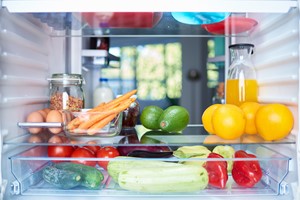Keep Your Food Safe During Power Outages

After a power outage, your frozen or refrigerated food may not be safe to eat. If food is not taken care of properly when the power goes out, it must be thrown out to avoid making someone sick. The Center for Disease Control and Prevention (CDC) offers these tips to keep your food safe in the event of an emergency:
Before:
- Keep appliance thermometers in your refrigerator and freezer. The refrigerator should be at 40°F or below. The freezer should be at 32°F or below.
- The power could go out at any time, so it’s a good idea to freeze containers of water and gel packs to help keep your food at 40°F or below, and have a cooler and frozen gel packs handy in case you have to remove your food from the refrigerator to keep it cold.
- If you think the power will be out for a long time, buy dry ice or block ice to keep your food cold in the refrigerator.
During:
- Keep refrigerator and freezer doors closed.
- If the doors stay closed, food will stay safe for up to:
- 4 hours in a refrigerator.
- 48 hours in a full freezer; 24 hours in a half-full freezer.
- If the power has been out for 4 hours, and a cooler and ice are available, put refrigerated perishable foods in the cooler. To keep them at 40°F or below, add ice or a cold source like frozen gel packs.
After:
- Never taste food to determine if it is safe to eat. When in doubt, throw it out.
- Throw out perishable food in your refrigerator (meat, fish, cut fruits and vegetables, eggs, milk, and leftovers) after 4 hours without power or a cold source like dry ice.
- Throw out any food with an unusual odor, color, or texture.
- Check temperatures of food kept in coolers or your refrigerator. Throw out food above 40°F.
- If you have an appliance thermometer in your freezer, check to see if it is still at 40°F or below.
- You can safely refreeze or cook thawed frozen food that still contains ice crystals or is at 40°F or below.


